#Viking stone ship burial ground
Photo

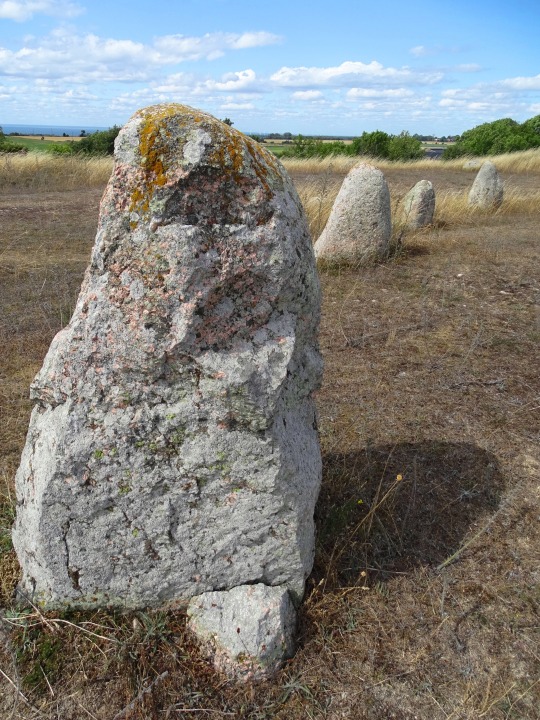
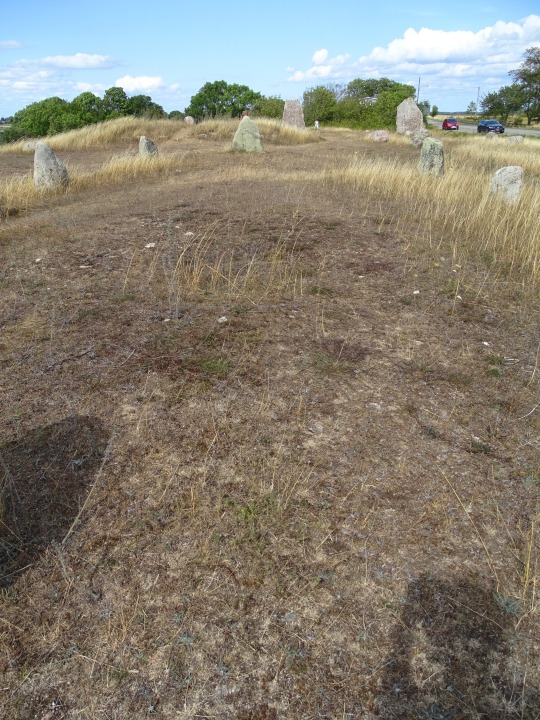
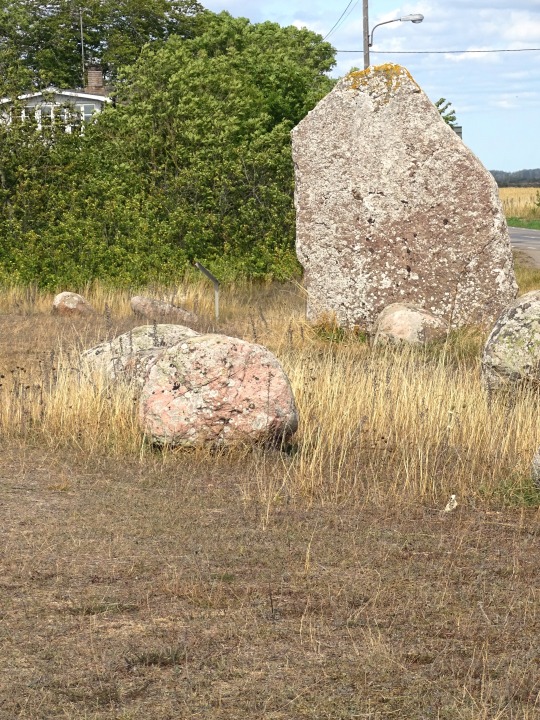
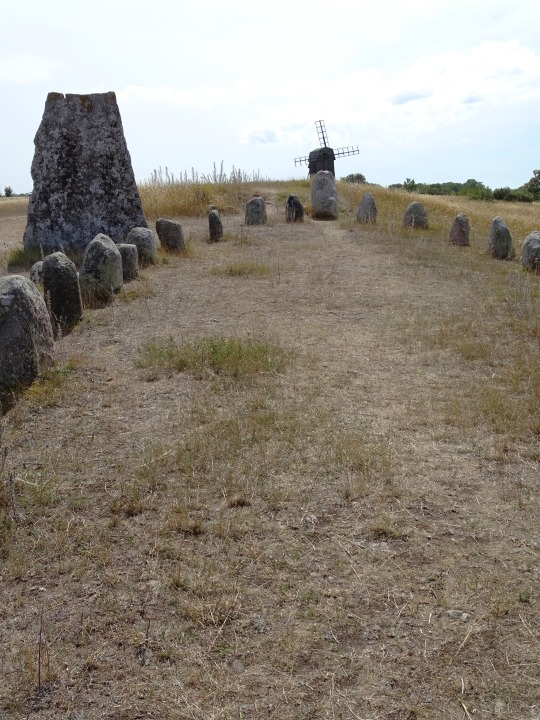
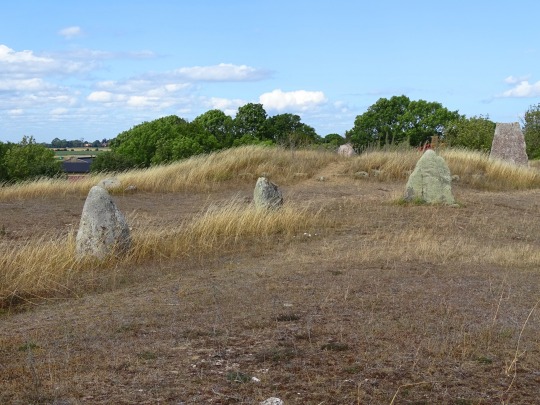


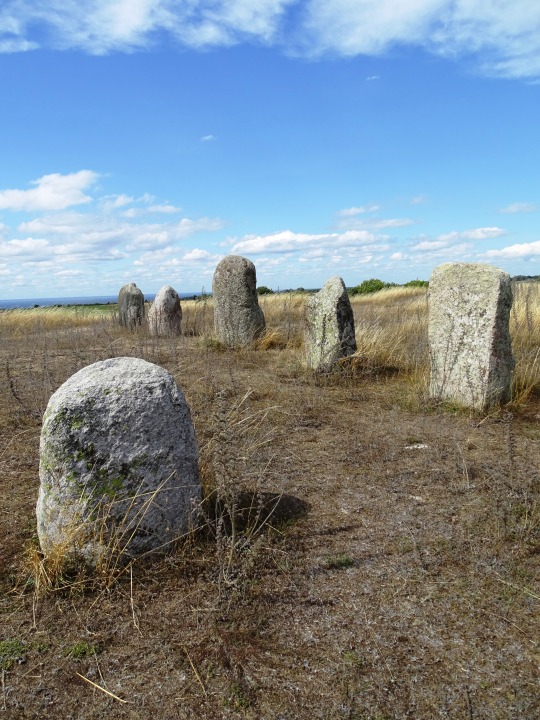

Grave Field Gettlinge, Sweden (No. 5)
Gettlinge burial ground is an ancient monument in Södra Möckleby parish on southern Öland. The burial ground is one of the largest on Öland, with a length of almost two kilometers. It is located along the island's western road between the villages of Gårdstorp, Gettlinge and Klinta.
The burial ground was described by historian Johannes Haquini Rhezelius in his "Monumenta runica", from 1634. He drew of the ship's setting in his travel diary. Carl Linnaeus examined a tomb in 1741. The landscape depicter Abraham Ahlqvist wrote about the place in 1825. He was particularly interested in the two three-metre-high stones in Klinta.
The line of prehistoric cultural remains begins north of Gettinge village. Many have been destroyed by quarries or by treasure seekers. In the burial ground there were about 250 graves. Today, more than 200 remain. Most of them are stone settings from the Late Bronze Age and Iron Age. In square or round stone circles, stone coffins with unburned skeletons have been found. The northern part of the field is most diverse. The large limestone slabs there have been erected to mark the significance of the site. On an impressive, 30-meter-long ship's settlement, which consists of 23 erected granite blocks next to each other, there are about twenty bowl pits. Bowl pits are a recurring motif on stones from the Bronze Age.
Around 1900, 15 graves were examined in Gettlinge. They were only men's graves, some contained weapons but most were looted. The best preserved tomb consisted of ten limestone slabs and a double layer of covering stones. The deceased had been laid in the grave along with his dog, two spears, a shield and spurs. This tomb form is from the first century after Christ. The burial ground was utilized for 2000 years from 1000 BC to 1050 AD.
On the west side of the island there are several burial grounds. The largest, with about 300 graves, is located in Ås at Ottenby. Another large field is located at Mysinge.
Source: Wikipedia
#Grave Field Gettlinge#Viking stone ship burial ground#Nordic Bronze Age#Route 136#Stora Alvaret#landscape#countryside#Kalmar Strait#Sweden#Kalmar County#stone#lichen#flora#meadow#original photography#travel#vacation#summer 2020#tourist attraction#landmark#free admission#Sverige#Scandinavia#Northern Europe#windmill#archaeology
27 notes
·
View notes
Text
Most people in the world have heard of the awe-inspiring and mysterious megalithic site in England called Stonehenge, but of course, it doesn’t stand alone. Sweden’s Ales Stenar is equally as mysterious, as the reason for its construction or the method used remains unknown. These 59 stones were placed in the shape of a ship but was it more than a burial ground?
19 notes
·
View notes
Text
I had to satisfy my history/archeology interest on my recent trip to Aalborg Denmark and I was not disappointed!
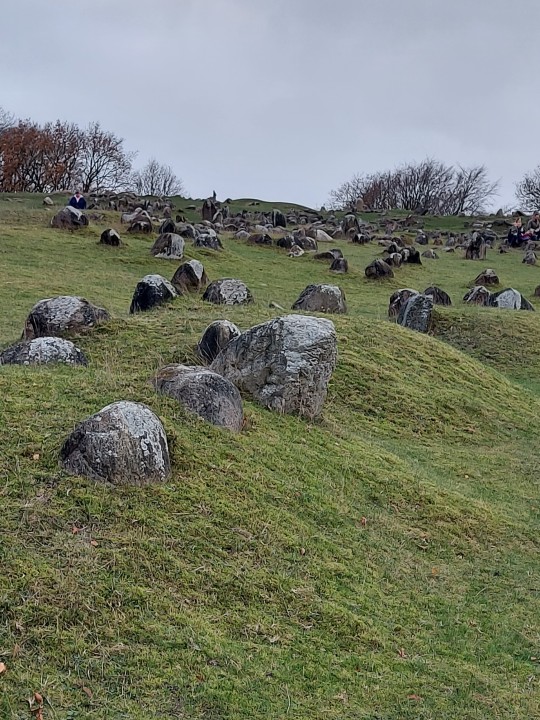
The place I visited is Lindholm Høje (Hill/Mound). I've seen some iron/viking age burial sites in Norway, but never this big! This site was used as a burial ground for 600 yrs, before burials were moved to churchyards. The place is littered with stone circles, ovals and boat-shapes outlining the burials. Even though many stones were taken over the years as road-fill, it is still impressive.

Since these were pagan burials, many grave goods have been found are are on display at the adjacent museum. The museum has an entire wall of burial pots. There were also a couple different villages at this site over the years, so a lot of everyday items have been preserved as well, such as the gaming pieces and wooden bowl below.
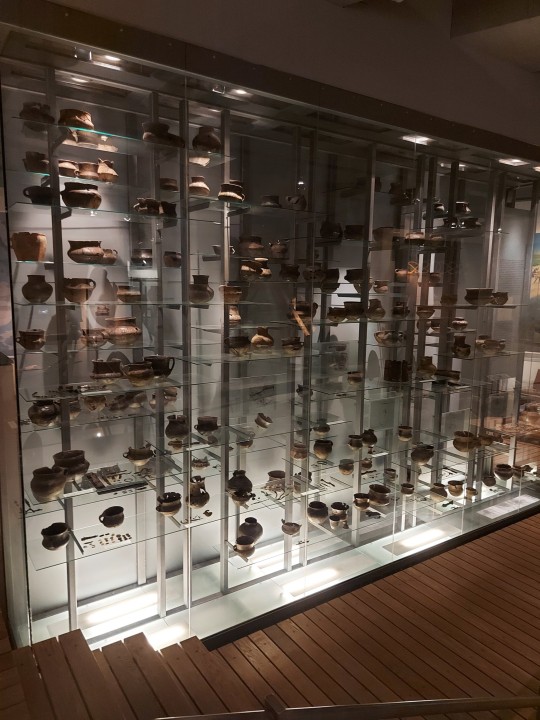
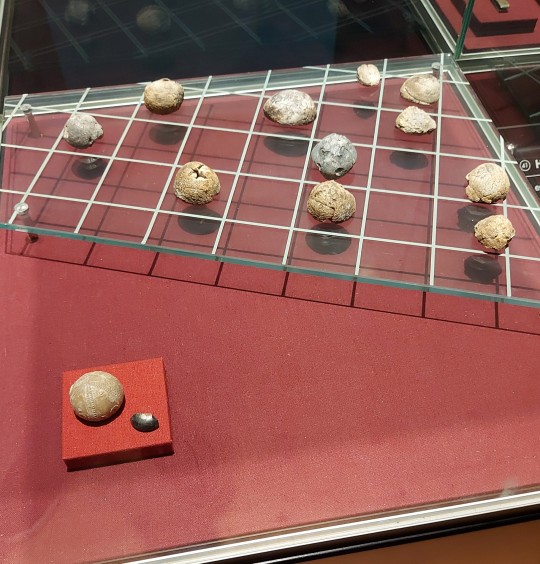


Finally, the site sits right above an important crossing of the Limfjord, and became a trading hub. Many glass beads and coins from the middle east have been found there. The reason these items are so well preserved is the same reason the villages were abandoned: sand. Northern Denmark is quite sandy, and because of the demand for timber to build ships for viking raiders, traders and settlers, the forests got too thin to prevent sand from blowing in from the west and eventually covering the place. Seems to be an environmental lesson there.

Visiting in November, I got a good blast of that bracing wind from the west!
14 notes
·
View notes
Text
Historic site of the week: Gettlinge
Gettlinge, a village in the southwest of Öland, Sweden, is renowned for its Viking stone ship burial ground, a part of the UNESCO-designated Stora Alvaret. The burial site, dating from 1000 BC to 1000 AD, features Bronze Age barrows and Viking stone ship burials, with some standing stones predating the Viking era, offering valuable insights into the region's ancient history.
0 notes
Photo
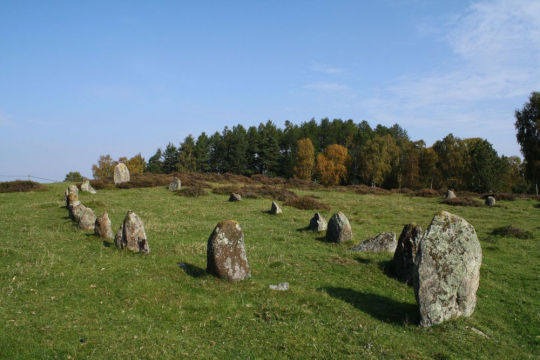
Vätteryd
The burial ground of Vätteryd has two stone and 15 ship settings, as well as 183 individual stones from the Iron, Vendel and Viking ages (about 550-900 CE).
Read more at: https://paganplaces.com/places/vatteryd/
0 notes
Photo

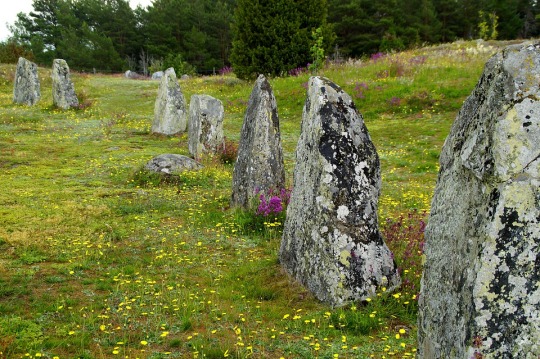
“The stone ship or ship setting was an early burial custom in Scandinavia, Northern Germany and the Baltic states. The grave or cremation burial was surrounded by slabs or stones in the shape of a ship.”
#viking burial ground#stone ship#ship setting#history#vikings#burial#cemetery#graveyard#nature#f#green
4K notes
·
View notes
Photo
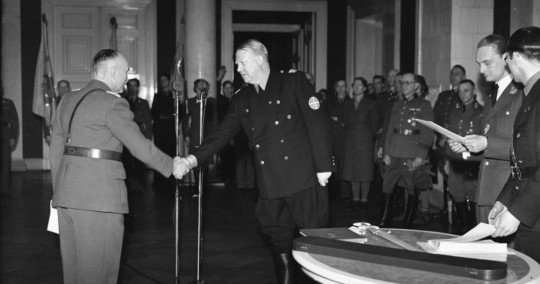

Vidkun Quisling receives the fake Snartemo sword, Oslo, 1943
and the actual Snartemo Sword
The Snartemo sword was found by two brothers while they plowed new ground on the family farm in 1933. Under a stone slab there was a grave from the 6th century with knives, spearheads, a glass jar, a belt buckle and gold rings. The main attraction was a sword with intricate decorations of gold and a preserved woven bandolar with a pattern of swastikas. There was much interest in the find, especially from Nazi Germany due to the pattern. SS archaeologist Herbert Jankuhn visited Norway in 1936 and saw the sword for himself on behalf of Heinrich Himmler.
In 1939 as the war raged on in Europe, Professor Anton Wilhelm Brøgger sendt especially vulnerable historical artifacts, among them the Snartemo sword, to a secret vault under a bank out in the countryside. Norway was attacked on April 9th 1940 and already on the 24th a letter was sent from an SS officer to Himmler about securing cultural objects in Danish and Norwegian museums especially the University Antiquities Collection and in the Viking Ship Museum. These objects were important for the nazis ideology and propaganda. Herbert Jankuhn had now been sent as Himmler’s special archaeological envoy to Norway. He wanted to lead the excavation of a burial mound, but Professor Brøgger managed to stop it. Brøgger got a gag order for his efforts.
In January 1941, Professor Brøgger and the Antiquities Collection were asked by the now nazi government to hand over several objects. They managed to drag out answering the request until february, demanding to know why and for what use they needed the objects. The nazis had most likely planned on giving the Snartenos sword as a gift to Himmler. Himmler was in Norway doing a round tour visiting museums and isolated farms in January but by Febuary it was too late for him to recive his gift.
In the autumn of 1941, a large exhibition called “Normannafolket” was planned and it was again demanded that the Antiquities Collection hand over the sword. This was an exhibition about the Viking Age and the Snartemo sword is from the Migration Period, not the Viking age, but the Nazis are not known for their historical accuracy. Deputy Supervisor Sigurd Grieg admitted that this was impossible as the objects were not actually in Oslo, but had been in a secret location since 1939. Following this, Brøgger, Grieg and the university’s principal Didrik Arup Seip were arrested. Seip was sent to Sachsenhausen concentration camp in Germany and spendt the rest of the war as a prisoner, Grieg was released, while Brøgger spendt a year in Grini concentration camp before he too was released.
The government continued putting pressure on Brøgger, Grieg and the Antiquities Collection to get the sword, and they continued dragging out the process and never actually giving up the swords location. The archaeologists refused to let the nazis manipulate and abuse history to build up their own made up version of the past. In the end a replica was made based on drawings and given as a gift to Quisling. The real sword was brought safely out of hiding after the liberation.
#history#viking age#migration period#world war 2#archeology#norway#i kind of want a movie about this#archaeologists and historians fighting the nazis#through akademia and slow bureaucracy#1940s
259 notes
·
View notes
Text
Maybe We Meet Again

My Masterlist
In Another Life (prequel to this)
Pairing: Ivar/Reader
Summary: The first part (of two) of the sequel of In Another Life, set in a Modern!AU.
Word Count: 2.9k
Warnings: Mentions of death, descriptions of violence and death, major character death (past), nothing else I can think of.
A/N: Hi, idk what you guys were expecting when it came to the follow up for In Another Life, but I hope you like this. Thank you so much for your support in that work and all the others, none of this would be possible without you guys keeping me sane motivated. Love ya.
Taglist: @1950schick @youbloodymadgenius @heavenly1927
Ivar’s gaze is focused on his phone, awaiting his brother’s answer to finally know how much longer will it be before he gets to the café, but something makes him lift his gaze, looking out the window.
He sees you looking positively overwhelmed on a street corner, eyes squinting at a sign, trying to read the name of the street.
Ivar doesn’t know what it is that makes him adjust the crutch in his left arm and stand up to approach you. He doesn’t know, but he doesn’t deny the pull, the whisper that if he doesn’t at least learn your name he will regret it.
“Do you need help?” He asks as pleasantly as he is able to, and based by the grateful smile you offer, even if twinged with embarrassment, he isn’t quite the mannerless grump his brothers make him out to be.
“Is it that obvious?” You huff a laugh at yourself, and continue, “I’m trying to find…”
Your eyes lower to your phone, and with an adorable frown in your nose, you give up on whatever it is you must say, and just show him the screen. The name of the university is familiar, but you are very much lost, it seems, for it is almost on the other side of town.
He tells you that, and tries not smiling at the expression on your face. Gods, you are cute.
“You are not from here.” He states, and you shake your head.
“Here on a scholarship, I’m going to be an assistant investigator in…” Your words die again, as you seemingly try to remember the name of the place you are supposed to be at. But you shake yourself out of that soon enough, and offer a smile, “I’m Y/N.”
The name makes something in him react, awaken. For a moment he tries to remember why, to understand, but it feels like trying to run in a dream, in feels strange and hopeless and out of his reach.
Before you can think him too strange, he tells you his name, and desperately tries thinking of something to say in the awkward silence that follows.
He finds himself asking if you have time for a coffee, motioning absently to the shop behind him, and by some turn of his luck, you say yes.
Ivar finds out soon enough that it is incredibly easy to get you to talk. It works for him, he doesn’t always know what to say, and he knows to most people he seems cold.
But you, you are warm and alive and expressive, and soon enough you are moving your hands excitedly, speaking of finally being granted the opportunity to assist in a dig on a ship burial site. Ivar frowns, and interrupts you with a mumble of your name, still not over the strange thrill that goes over him when sounds out the syllables.
“There’s no sea nearby, how w-…”
“A ship burial doesn’t mean one at sea,” You interrupt softly, eyes shining. After a breath, where it seems your smile trembles on your lips, you add, “Things are not as literal as you think they are, Ivar.”
He tries returning the smile, but his lips part and his breath stutters out.
Why does it feel like he’s forgetting something?
He shakes himself out of it, and leans forward on the table, resting his elbows on it and looking into your eyes.
“So, why all this? Why chase a love story all the way to Bække?”
You shrug your shoulders, a smile that Ivar tries not finding devastatingly adorable playing on your lips, “I don’t like secrets.”
“I don’t think they are keeping it particularly from you.”
“Still. I…it’s a story no one else knows, something that can change how we see the world.” Your eyes are shining in a sort of wonder, of excitement, he has never seen before.
Still, because he cannot help it, he reminds you, “How we see one man.”
“A man that changed the world,” You argue without hesitation, gesturing with your hands as you continue, “Strip away the atrocity, the cruelty, the…otherworldliness of those who are remembered as monsters, and the tale we tell changes, the world changes.
You place your hand over the worn book he saw you carrying, that when he asked you told it was your favorite copy of historical and archaeological records detailing the last years of the Golden Age for Vikings, your eyes fiery as they meet his,
“All we have to remember him by is the legend, the war stories, the chaos he sowed and the death that followed. Even his grave is one of magic, of superstition.”
“But not this one you are working on.”
“Not this one. If I can prove that she was his wife…” A breathed laugh leaves your lips, and Ivar clings to the sound. You bite your lip before insisting, “I just need her name to be the right one.”
“The right one?”
You shrug your shoulders, moving both hands so they are wrapped around your cup of coffee, though your fingers are anxiously tapping at the plastic covering. “His last breath was a whisper of a name. It may not mean anything, but it’s the one lead I have. He may have been a monster, but…he died with a name on his lips.”
“The name of his wife.”
You correct with a shake of your head, “Presumed wife, Rus records only speak of a shieldmaiden that was found dead in his room, before he tore the Rus apart from the inside. Sentimentality makes you think he was avenging her. Logic, on the other hand…”
When your words die with a gesture of your hand, Ivar finishes for you,
“Makes you realize he killed her.”
You nod, a twitch of sadness, a shine of grief in your eyes, before you shake your head at yourself with a sigh.
“The night the world ended.” You quote with a smile that trembles on your lips.
____
If someone were to ask him how life turned out this way, how he got to be here with you and have you love him and let him love you back, Ivar wouldn’t know how to answer.
He’s told you before that maybe it is Fate, that maybe, just maybe, you two were meant to be. Each time he speaks of it, you smile softly, usually shaking your head or kissing him to shut him up, but he sees the tremble in your smile, the curiosity in your gaze, the wondering.
Regardless of how he got here, he for once refuses to overthink this, refuses to let himself be twisted into knots by his own thoughts.
So, because he finds himself missing you -because he wants to, because he can, because he asked you to move in and you said yes- Ivar goes in search of you.
He finds you on the couch, your eyes closed and breathing deep even if your laptop is still open on the coffee table, expecting you to continue work you probably fell asleep doing.
More than a year you’ve dedicated to this dig of yours, this investigation. More than a year, you’ve A part of him torments him with thoughts that you may look elsewhere -both when it comes to a home and when it comes to him- when it is done, but he tries not dwelling much on it.
He whispers an endearment as he presses a kiss right under your ear, a gesture and softness a year ago he never would have believed himself capable of.
“C’mon, wake up, Princess. I can’t exactly carry you to bed.”
“There’s a…bed right here,” You make a vague gesture to the tiny space you leave for him to apparently sleep in, “And there’s a me, and a you.”
Ivar tries replying with a whisper of your name, but Gods, you have him wrapped around your pinky, and your smile stops whatever he was going to insist with.
With a sigh, he sits on the small space you leave, and discards the crutch on the floor at his side. Trying to move you so he can lay down and have you rest on his chest, he once again meets resistance.
“No, no, no,” You mutter sleepily, and stiffen so he can’t maneuver you. “I’m comfy. You leave me be, Lothbrok.”
Our arms lift weakly, inviting him to lay partially over you with his head on your chest. It is inviting, especially with the promise of your fingers running through his hair.
So, he desists and settles in place, pressing a kiss to the center over your heart and laying his head on your chest, his arms going underneath you and wrapped tightly around you.
Ivar closes his eyes, and he can hear it beating under his ear, can hear its rhythm as if he could know it by memory.
He turns his head, and presses another kiss to the skin over your heart.
What he wouldn’t do for that heartbeat.
____
You wake him in the early morning whispering excitedly about the chance to finally go to the site, and insisting that he has to come with you.
“It’s her.” You whisper, and your smile is fucking blinding. When he apparently dwells too long on the warmth of that smile, you insist with an excited pitter-patter of your feet that he gets up.
He does, and gets in the car with you, around curses about the cold that you giggle at, an annoyed furrow in his brow you kiss away, and grumbles about how far away it is that you soothe away with soft kisses.
You get ahead of him when you walk towards the stones embedded on the ground you said are in the shape of a ship, and Ivar limps behind you as you approach the biggest of the stones.
Your hair flows everywhere in the wind, and your arms are wrapped tightly around yourself to ward off the cold.
“The one thing that made him human is here,” You say, and he watches as your left hand raises as if to press your palm against the old stone, before you stop yourself. “The one proof that he wasn’t a…a monster. Just a man.
You chuckle, but it is bitter, sorrowful, pained; and your gaze lowers to the ground.
“Or…he was, until he killed her.”
He doesn’t know what to say to that, to that look in your eyes, to that pressure he feels deep in his chest. So, Ivar grabs on tighter to his crutch and moves closer to the pillar.
“‘She will return victorious’.” Ivar reads slowly, feeling a pit of dread at the base of his stomach, like he’s at the edge of a cliff and about to fall, like he knows what it feels to have the world end, like…like he-…
Those that followed him, those that chose their Viking roots over Oleg’s Christian ways, stay quite a distance away, they know better than to approach.
Ivar doesn’t know how much time he has spent sitting on this cold grass engraving with shaking hands the words he tries remembering how to spell.
He knows he’s lost a lot of blood, can feel it, sticky and colder by the minute, pooling underneath him. The one blow that managed to land on him, he wishes he could remember who it was, how it happened.
He doesn’t remember much of what happened between your lips breathing a last kiss over his and the light dying in Oleg’s eyes as his body surrendered to the torture.
Even his hand is bleeding, Ivar notices. He remembers faintly of holding on to a small statue when he was told his father died, he remembers the feel of it breaking the skin.
He could die here, he knows.
If he doesn’t let them approach him, if he doesn’t let them stop the bleeding, he will die here, tired and worn and alone, under a pool of his own blood before a monument of his worst mistakes.
He can close his eyes and he can still feel the fathom touch of your hand on his cheek, can still taste the warmth of your smile pressed against his own lips, can still see your gaze filled with love and the promise of forever.
He can still hear your voice, soft and gentle, the whispered hope that maybe Valhalla is another chance to meet again, that maybe in another life there’s hope for…hope.
He finishes the last of the letters, and he sways forward, brow resting against cold stone.
It would be easy, he gathers, to close his eyes and give in to the lull of the memory of your voice, your touch.
But he refuses to.
Because he can also feel your hand giving one last caress before you sentence you both to die, can still taste the tears in your lips as you promise only death will stop you against his own, can still see your dead eyes staring back up at him, his knife deep in your heart.
And so Ivar drops the blooded iron tool before the words he will pray to his very last breath are true: She will return victorious.
He vowed once he would make the world remember him, but the world ended the night he put a knife through your heart. The world -his world- ended, and he finds with cruel clarity that he wants them all to know what it feels.
He will still be the most famous Viking who has ever lived. He will make them all suffer and pay and die. And they will remember the pain and death and chaos. And he will be a legend, if only one they will whisper in fear for the rest of time, if only the legend of a monster in a man’s skin.
Ivar crawls away from the boat made of stone, certain many will try to stop him, even more will try to kill him. Certain they will fail.
They can’t kill him, don’t they know who he is?
“Are you okay?” Your hand on his back, touch making him realize how quickly his breaths are coming out of him. Bu the can’t-…he can’t get his breathing back under control, he can’t…
He moves back, away from the stone -the monument, the grave- and his hand doesn’t grip correctly at the crutch on his side. Almost all his life with these things, he’s never failed to use them, they work as an extension of him by now.
And he realizes with dawning horror he wasn’t reaching for the forearm crutch he’s used to, he was expecting to find a rougher one, wooden and metal and…Gods, he can feel the pain of those iron braces, he can feel the pressure of the bones that try to break under unfitting contraptions.
He cannot keep the scream from leaving his lips when they set the bone back into place, the pressure building from the inside of his leg and the pain threatening to pull him under.
He feels faintly of your hand on his face, trying to help him feel anything other than pain; hears choppily of your voice by his ear, trying to drown out the beat of his own heart.
He can’t tell how much time passes, all he knows is that your touch and your voice prove to be the only thing keeping him conscious.
“I hate those things.” You mutter sometime in the night, and he opens bleary eyes to watch you gritting your teeth at the iron braces that lie somewhere on his left.
“Necessary.” The word leaves him in a gasp, and is all he can say. Still, the Gods would sooner sew his mouth shut for him to refuse arguing.
You have the look of wanting to argue, he knows it, he knows that fire like he knows himself; but you say nothing.
The fire is a different one, but still scalds, when you press your hand over his chest.
He hears you say his name, or…or he thinks he does, and when he looks at you, your eyes are the same. And…how didn’t he know?
His lips form the shape of your name, but he only rasps out grief, horror, regret, his regret.
Your expression falls, your eyes fill with tears. He knows that look, that shine of devastation in your eyes.
You look at him and he sees it written in your eyes, the plea that he doesn’t ask you to make this choice.
But he cannot go on while the threat of them taking you away from him looms over him. Either he loses you for good now, or they do.
A part of him dreads your answer, and another is already certain what your choice will be.
“I’ll stay,” You sentence, and it feels like breathing for the first time in a century, when he fills grateful lungs with air. “Out of love for you, not for the world you want to build.”
But he cannot keep the coldness of his voice, he cannot keep the venom from his lips. Because even if your choice was to stay, he wants to punish you for even thinking about leaving him behind.
“A world where you happen to be one of the most powerful women. Convenient, isn’t it?”
But even as ice cuts and bruises and breaks the skin, your smile is warm.
“I choose this world not for power, but because I cannot fathom a world without you in it.”
“You remember.” Is all you whisper. And he recognizes that expression in your face too, all he knew was the feeling behind it once. You have the look of someone whose world just ended.
____
Sooooo, what do you think? I’m sorry there isn’t much fluff, I’m not good at it. And I’m sorry it ends in a cliffhanger, that isn’t nice, but the last part (which takes place from the Reader’s perspective) will hopefully come soon.
Thank you so much for reading, I would love to know your thoughts on this one!! Love you!!
Maybe Death Gives Up On Us (sequel to this)
100 notes
·
View notes
Text
Daughter of the Sea, Daughter of the Storm (Pt. 2)
Gay viking pirate lady gets married to another pirate lady, read all about it, they are very in love.
Inspired by @onepiecehcs viking nami au and special thanks to @captainsupernoodle for inspiring me to write about sword proposals!!!
Enjoy!
Ao3 For Better Quality!
--
Vivi first saw her love on the sea, drenched and beautiful and axe-wielding.
She last saw her love holding her hand above her head like a declaration of love, like a defiance to the world, you cannot take me away from you.
She last kissed her love when the necklace she now fingers was draped around her neck like warmth and fire and love, and she last talked to her love two hours ago, when Nami called to say that the Thousand Sunny had entered Alabastian waters.
Vivi currently awaits to be kidnapped. She’s in a prime spot for it, on her throne, bags packed beside her and jewelry layered about her. Her hairs in a braid that Nami taught her, pattern familiar even after all these years, and a gift awaits in her hands for the Pirate King.
Kohza has been placed as next in line for succession, and the newest law Queen Vivi passed yesterday (In case of kidnapping by the Pirate King, the next in line shall immediately be placed as acting ruler, law effective for one year but all changes to succession permanent) without her council knowing is ready to be put into use.
All that is left, is a warrior to sweep her off her feet.
The door slams open – her guards jump to attention, but a look from the Pirate King (Conqueror’s Haki) silences any action.
Instead, her love walks through the door.
Her hair is braided more intricately than any wanted poster could reveal, and kept together with beads and stones and gold and diamond. Its longer than Vivi remembers, but still catches like fire in the desert light. Her shoulders are bare now, style changed, and revealing a long sleeve of tattoos – Vivi see’s clearly her first one on her shoulder, the X she holds near (resting just above a familiar bracelet), and the start of the straw hatted jolly Roger that Vivi’s sure is draped across her back, but she doesn’t know the stories behind the others and cannot wait to find out. Nami’s still wearing axes around her hip and on her back – now folding in with a cape of blue and gold and her skirts are hitched up to the brown belt around her waist, revealing loose pants and boots fit for sturdy warriors.
But her face – oh her face! How she missed that smile, those eyes, the familiar dusting of freckles and the soft quirk of the eyebrow. The laugh lines, from joyous celebration (She’s the navigator of the Pirate King) and the scar running from her left brow to left ear (now pierced and decorated) are new, but she’s still Nami.
“NAMI!” She calls, and stands from her chair, rushing to her.
Nami smiles and laughs shouting “VIVI!” in return, and sweeps her off her feet, strong and relentless in her love. “You aren’t supposed to run to your kidnapper!”
“You knew I would – I’ve always loved pirates and adventure, haven’t I?”
Nami only laughs again and kisses her senseless, picking her up and bringing her to her crew, her family.
The newspapers will talk about her kidnapping and Marine ships will be after the Pirate King’s ships for days, but Vivi will be smiling as she dresses in pirate garb and flees to the sea at last – her lover’s arms around her.
(She can’t wait to show her what she learned with the spear.)
--
Three months later and Vivi stands bundled in furs on the cliffs of Cocoyashi, nose red and hands clasped together. It’s the summer months, but it’s so much colder than the desert nights of Alabasta ever were, especially without her love wrapped around her.
Her love is instead covered in dirt and dust, tirelessly shoveling rock and soil out of the way as she digs into the ground. Her skirts a pulled up to reveal thick pants and her boots slosh in the mud with every step. Her hair – intricately braided and weaved with gold by Vivi this morning – is falling out and messily shaded about her face. The sky is of the mid-morning sun, dim, but catching the height of Nami’s cheek bones and the frame of her face, the dusting of frackles spilling across her cheeks and onto her body. Her hands do not tremble against the cold where they grip the shovel, so used to instead gripping the axe that lay nears Vivi’s feet.
Her love is dirty as she digs into her adopted mother’s tomb, her burial of treasures that she couldn’t bring with her beyond, and Vivi cannot help but be touched that her love does this all for her. For Vivi.
It has been an hour now, and Vivi almost can’t feel her toes. But the sun is shining, and her love is climbing out the trench she created, beautifully carved sword in hand.
According to legends of Cocoyashi, before warriors can be sworn to another they must first be sworn by the blade. By exchanging swords, they promise to protect one another and fight for one another, to keep each other by their side till their dying breath and then on till eternity.
Nami has no sword, but Bell-mere does, one promised to Nami or Nojiko on their wedding day – whoever married first.
Nami has won that race, and so it is Nami who digs into Bell-mere’s burial hill, where her body is not laid but her mortal belongings are, and retrieves the sword.
(Wolfsong, is this swords name, for power and the call for family. Nami tells Vivi of Bell-mere having the sword forged when she was three, a promise that Bell-mere’s love for them would always protect.)
She climbs out of the pit, sword in hand, and Vivi can only stare at her love as she goes to her knee and presents the sword – iron and metal strength with woven patterns promising a future protected. On its hilt rests a single golden ring with a small blue stone atop it.
Vivi does not speak despite the tears rolling down her cheeks (She is so very happy-) but reaches for the ring, sliding it on her finger, and then for the sword. When it is in her hand, she reaches to her own waist.
All the while, Nami kneels still in the cold, her breath breathing out plumes of white as she stands without her furs and dirtied. Her hands are still splayed out but she’s looking up at Vivi with adoration in her eyes and love in her smile.
(She has never looked more beautiful.)
Vivi draws the sword from her waist, golden and slender looking compared to Nami’s larger Viking gift, but it is no less deadly.
(Sunviper, is this swords name, for the thousand sun reign of Alabasta and the striking bite of the blade. Vivi whispers to Nami about how it was forged by her father’s orders, for that his daughter might rule for a thousand more suns with the deadliness of a thousand serpents.
They both laugh, because the former King Cobra could have never seen his daughter becoming a pirate.)
Vivi places this sword in Nami’s hand, and then a ring atop it. Nami stands, sword held carefully in her hands, and slips the ring on while holding the sword.
They stare at each other then, something silent and holy passing between them, like a vow or promise.
There’s water dripping down her chin now and Nami’s eyes are wet too, and suddenly that inescapable, beautiful moment is over and they fling themselves at each other because now –
Now they are promised by rings and swords and hearts, now they are betrothed by their own hands, now they are bound and when they get to the open seas of the Grand Line –
Nami will not only be her queen but her wife.
--
Nami was born in the depths of winter on the coldest mountain top, but she is married at the height of summer in the midst of the most dangerous waters of the world. The sun is shining and she is smiling, happiness having found a home in her chest and never leaving ever since she saw her beloved (her Queen) again.
In the midst of summer she is married atop of the Thousand Sunny held high on Laboon’s head so that all her guest may see as joyful music plays through the air. There are eleven thousand guests from a thousand places, all invited by her and Vivi’s hands. The Moby Dick carries half of them, private ships and the Straw Hat Fleet now numbering 10,000 strong carrying the rest.
In the crowd, Nami could spot Dressrossa and Fishman Island and Zou, a marine entourage and two emperors, Revolutionaries, billion berry men and women and a thousand riches. On the ship she could see her beloved crew and the people of her village, her sister and friends, Alabasta’s new king and her captain standing beside her.
But she doesn’t, because she has eyes only for one – Vivi.
She’s dressed in white and gold, silver decorating her limbs and hair. Her flowing sleeves are split to reveal golden arms, and her hair is braided in a fashion Nami knows she taught her. A smile, radiant like the Alabastian sun, shines at her. There are sunspots across her cheeks and a twinkle in her eye, the start of a tattoo running down her shoulder and the necklace Nami gave her around her neck and gods – Nami has never felt more flustered than in this moment.
She herself is nothing fancy – blue cloths and layered necklaces, bracelets around her waist with her log pose and her sword and axe by her side. Her hair is as intricate as Vivi’s, done up by her sister and braided in gold and iron compared to Vivi’s silver.
Nami feels amazing and in love, and she’s getting married at the height of summer to the Queen of Alabasta as the Pirate King’s Navigator.
She’s freer than she has ever been before.
-
The crowd grows quiet as the Pirate King lifts his hands. As captain, he’s preceding over the wedding.
It’s simple, the way all the Straw hats are simple.
“Nami,” He states her name, not giving any fanfare – the people are here for her, why do they need a reminder of who she is? “State your vows.”
Storm Summoner Nami takes a shuddering, happy breath than speaks. “Vivi. I have loved you since before I met you, I think. And then you shouted for us in Alabasta, you shouted for the fighting to stop, and that is when I knew I loved you. And every day after that, I have fallen in love again. I am a warrior… I cannot make the fighting stop – but I promise to fight for you, to guide, you to love you – and that is all I can possibly give beyond all the riches in the world. I love you, my queen. Marry me?”
Luffy’s grinning wildly next to her ear, blessedly silent for once, but Vivi’s face is bright red as she begins her own vows without prompting. “Nami – my love, my queen, my light – I have practiced this speech for a thousand days, but I don’t think anything I could possibly say could prove my love to you more than action. You fought for me in Alabasta, and you have given me gift after gift after gift – so here is mine.” And with that, Queen Vivi of Alabasta lunges forth and kisses her lover with a passion that rivals the sun.
Luffy laughs and the crowd cheers. “THAT’S IT! I PROUNOUCE YOU WIFE AND WIFE! LET THE FEAST BEGIN!!” And the world erupts in euphonious cheers as thunder from cannonballs and godly might cracks in the background.
Vivi and Nami part and laugh and smile – as they head down the deck, Nami hoists her wife onto her shoulder and jumps onto the Moby Dick, where a feast awaits them both.
In between gulps of whiskey and wine and bits of delicacies that only the most skilled cooks could make, Nami holds her wife’s hand and smiles at her.
After a week of feasting they shall move to Raftel once more, and show their last crew member the treasure of ages, but for now?
Nami holds her in her arms and relishes in happiness.
-
At midnight she dances with her wife, the party still going strong but muted to her ears. A low song, unknown to the everyone but them whispers between their breaths.
Nami sways, Vivi’s hands clasped in hers as she touches her forehead to her wife’s.
Her wife. It’s been half a day but she still cannot believe it.
She hums, Vivi humming with her, the low playing of a violin in the background singing with them.
“I love you,” she says simply, like a truth that cannot be stolen, and Vivi responds the same.
“And I love you. Are you ready to shake the world?”
A kiss and a promise – “Always.”
But for now – they sway, breaths shared and hearts stolen by each other and promised swords hanging by their sides and rings on their fingers. They are still dressed in their wedding garp, though Nami has shedding her cloak and Vivi her cape. Simply, like all straw hats are, in love as adventure brews on the horizon.
-
The papers talk about it for weeks.
The Navigator of the Pirate King and the Straw Hat Pirates, Storm Summoner Nami, warrior of Cocoyashi, wedded on the pirate ships of two emperors to the Kidnapped, or now Runaway Ransom Queen of Alabasta, Nefertari Vivi. The wedding attended by thousands of people including various princesses and kings and emperors – all gathered together for two people
The next outrageous stunt of the Straw Hats – and that is not all.
A week after the marriage and consequential feast for a week, the Straw Hats do not take the Underwater route to the New World. Instead, they ransack Mariejois.
‘”A honey moon,” they say Nami calls it, “A gift to my wife,” Referring to the slaves freed and the riches stolen.
“A disaster,” The Celestial dragons shout, “Kill them all,” they scream holding Saint Charloss’s beheaded body, courtesy of the legendary Oska.
The marriage of Nefertari Nami and Nefertari Vivi is an earth-shaking one but they do not care.
For who could challenge them?
#this got gay real quick fellas you better enjoy I love tem#navi#nami#vivi#nefertari vivi#viking nami#VIKING NAMI!!!!!!!!!!!#op#one piece#opau#opfic#whirlywhat#whirlywrites#onepiecehcs#luffy#monkey d. luffy#au
41 notes
·
View notes
Photo

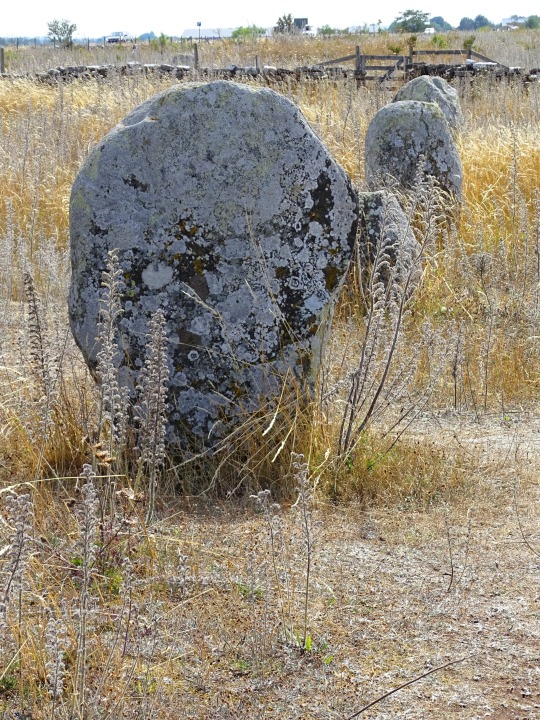

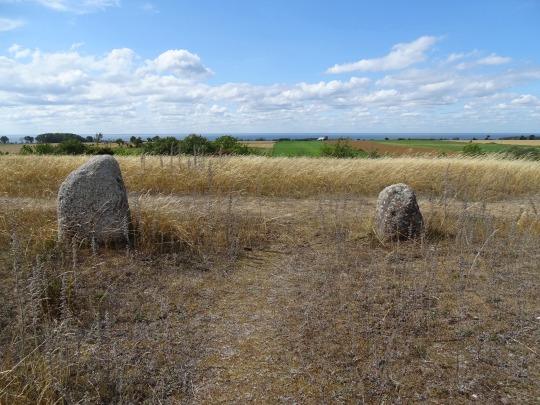
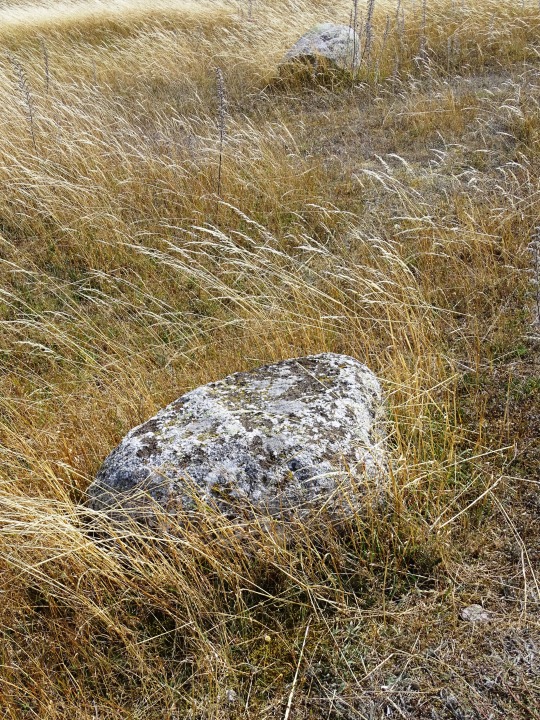


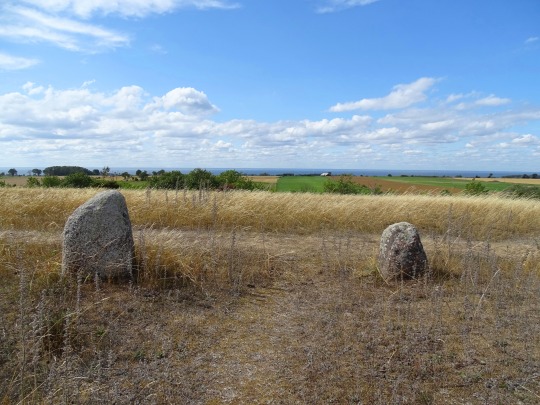


Grave Field Gettlinge, Sweden (No. 3)
The earliest settlers in Öland built early Stone Age wooden huts; the best examples of such excavated prehistoric dwellings are found a few miles to the east present village of Alby. Archaeological excavations conducted over a period of years in the latter 1900s have revealed evidence of bear, marten, seal and porpoise, but also elucidate Mesolithic hunting and gathering technologies through discovery of bone spears, elk antler harpoons and flint. These earliest inhabitants would have crossed the Kalmar Strait from the mainland toward the end of the last ice age, before the glacial cap had fully melted, and thus provided an ice bridge. The settlements of the Stone Age are key resources on Öland that led to the UNESCO designation of the Stora Alvaret as a World Heritage Site.
The principal evidence of life in the Gettlinge area from 1000 BC to 1000 AD is derived from the gravefields themselves. The Gettlinge Gravfeld is situated near the coast highway and contains some Bronze Age barrows as well as the more prominent stone ship burials, making it one of the largest gravefields on Öland. These burials span the late Bronze Age, Iron Age and Viking Age. Some of the individual standing stones are thought to predate the Viking era. Numerous artifacts have been recovered from gravefields elsewhere on Öland, including bronze chains and a bone needle case.
Viking graves have also been found at the Hulterstad Gravefield as well as the extensive Strandvalle Gravfeld, both on Oland. These findings imply that Gettlinge was a link within a chain of Viking settlements concentrated on the southern coasts of Öland, although most Viking settlements were actually found on the southeast of Öland having better access to the open sea.
Source: Wikipedia
#Grave Field Gettlinge#judge circle#Viking stone ship burial ground#vacation#Nordic Bronze Age#Stora Alvaret#Kalmar County#Öland#flora#meadow#landscape#countryside#tourist attraction#landmark#archaeology#travel#Swedish history#Sweden#Sverige#Scandinavia#Northern Europe#summer 2021#grass#free admission#Kalmar Strait#Baltic Sea#Kalmarsund#stone
3 notes
·
View notes
Text
KINGLEY VALE
Along The South Downs Way, near West Stoke and heading towards Stoughton. Passing by the Iron Age Goose Hill Camp. The New Stone Age, 6000 year old, flint mine. The Neolithic Barrows and the Bronze Age Cross Dyke boundary for Bow Hill and the Bow Hill Camp (a particularly well preserved hilltop enclosure) There’s even a possible Temple from the Romano-Celtic period. Keep climbing up to the very top of Bow Hill. Up to the two enormous Bronze Age burial mounds known as The King’s Graves or The Devil’s Humps. These “Bowl Barrows” and “Bell Barrows” thousands of years ago would have been covered in gleaming white chalk and sitting in such a prominent, commanding position could have been seen for miles. Climb to the top of one of The Devil’s Humps. Looking South, Chichester Harbour is on the right. The Bosham Channel, slightly left, leading to Bosham Harbour. Legends tell of King Canute, sitting on his chair to turn the tide at Bosham and of the tragedy of Canute’s drowned daughter buried in Bosham Church. Face North and there, the valley way below, is the mystical Kingley Vale.


Kingley Vale comprises of chalk grassland and woodland. The valleys sides are densely populated by trees and the bottom and entrance of the Vale is a forest too. Oak, Ash, Hawthorn, Blackthorn and Dogwoods grow together but the predominant species is the “Tree Of The Dead” the Yew tree. The Yew thrives in the shallow chalk soil and the valleys slopes are almost pure Yew forest. Arguably one of the finest examples of a Yew forests in Western Europe. The forest contains a large grove of twisted, ancient, veteran trees, that are among some of the oldest living things in the UK.

It’s notoriously hard to date Yew trees. They are slow growing evergreens. They die from the core outwards making it impossible to count rings and Yews can go dormant for years, effectively not putting on any growth. Their branches weigh so much and grow so long they end up touching the ground and putting down roots. Giving the appearance of a new ring of tree’s surrounding an old decrepit tree. A Veteran Yew tree could easily be 2000 years old and possibly as old as 9000 years.
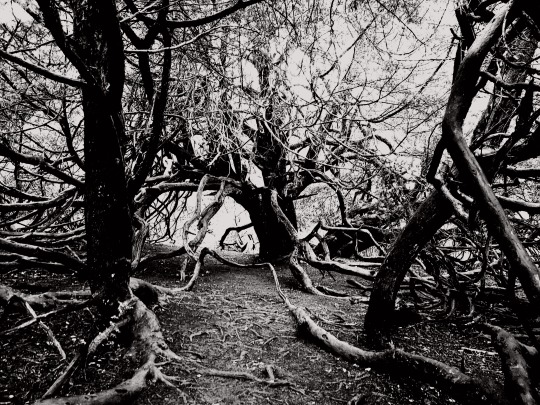
The veteran Yews canopy is vast and dense, blocking out the sunlight. It’s like walking into a tree cave or a domed living building. The birds and other wildlife tend to avoid the darkness underneath the canopy. Whatever the season a Yew forest is strangely quiet and unnaturally cold. The summer sun barely penetrates, just the odd beam, like a flickering torch. In the autumn and winter months, the cracked, twisted limbs are constantly damp and decidedly dank. In spring, the sun just illuminates the fantastic sight of great clouds of yellow pollen drifting through the air.
In pre historic times, the Druids revered the Yew tree, one of the few evergreen trees in Britain. Having great longevity and an ability to grow trees from its own limbs, it was seen as a symbol of everlasting life, of death and rebirth. Yews were landmarks, meeting points and places to gather. They used the wood for their bows, spears, staves and wands. They made carvings from Yew wood, as offerings, left at sacred sites. The poisonous needles and berries were used in ceremonies. The Romans recorded occasions of death by sword or Yew tree poisoning rather than surrender. There are Tumuli scattered all along The South Downs Way, it was a busy area in pre historic times. In Kingley Vale alone, there are a minimum of 14 scheduled ancient monuments. In pre history the area would of held a vast significance.
Themes of eternity, death and resurrection surrounding the Yew continued into Christian times. The early Christians often took over pre Christian sacred sites. Most older churches have a Yew tree, some pre dating the earliest church on the site. Yew boughs, at Easter, were taken into churches as symbols of palm’s and shoots were woven into mixed wreaths.
Being amongst the veteran Yews it’s easy to feel why Kingley Vale has such a reputation for the supernatural.
Vikings ransacked Bosham Church and escaped on the tide. Although the ship carrying the church bell, sank with all hands, in the Bosham Channel. Local legend tells that when the weather is rough, the bell can be heard to toll.
Returning in 859 the Viking raiders missed the notoriously quick tide. They became trapped between the mud flats and the advancing men of Chichester, showed no mercy. The Vikings bodies were taken to Kingley Vale and buried. To mark the victory, Yews were planted, one over each Vikings grave. Legend has it that Yews were planted so their vast root systems would keep the dead in their graves. At night, their restless spirits look for a passage back to the sea but they are forever lost in Kingley Vales “Tree’s Of The Dead” forest. On the summer night anniversary of the Vikings burial, a river of blood is meant to flow past the veteran trees, standing out against the white chalk. Some say the ghosts are the old Druids and their sacrifices gathering around the loan sacrificial Oak, surrounded by the ancient Trees Of The Dead. There are stories of the trees themselves moving, changing their shapes, surrounding the unwise or naive walker.


In the vale, from the medieval period, field boundaries are still visible. Henry V victory at Agincourt was famously won by the mud and the longbow. Its claimed the bows were made from Yews cut from Kingley Vale.
In the 1800’s the valley was used by the military as a rifle range. During World War 2 the West Stoke Home Guard was based in Kingley Vale. An underground control base was at the bottom of the valley and the remains of its observation post can still be seen on the western ridge. Troops also trained in the Vale, particularly in the build up to D-day. Some shrapnel damage is still, sadly, visible on some of the older trees and the odd crater can be found in the chalk grasslands. Amazingly it wasn’t until 1990 that Kingley Vale was properly cleared. 6000 live rounds of various types was removed!
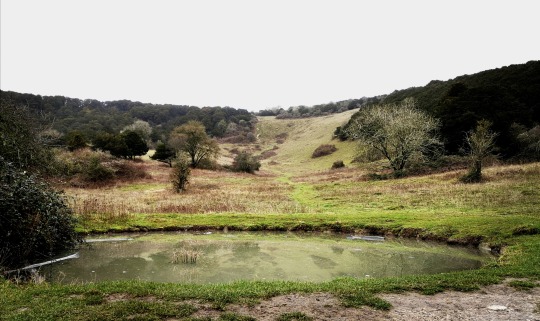
Kingley Vale oozes a strange timelessness. There’s the ancient mysterious past almost everywhere you look. Its Ice Age formed landscape, surrounds and encloses, draws you into a living history with the veteran Yew Grove. It’s been a unique magical place for thousands of years. And the view, above the Vale on Bow Hill is beautiful, especially on a clear day. If you get half a chance I urge you to make a visit.

#south downs#South downs way#woodland#trees and forests#forest#grassland#photography#photographers on tumblr#original photographers#history#mysterious#mythology#hauntology#fortean#walks#dog walks#prehistoric#tumulus#vikings#nature#sussex#countryside#art#digital art#travel blog#ghost talk#ghostly#ghost and hauntings#burial mound#yew tree
9 notes
·
View notes
Text
Wednesday 20th January 2021
History from Long Ago and a Bit of Nature Thrown In
See Update edit at the end of this blog*
Another dark day here, absolutely bogging as we might say. Wet and uninviting. There’s no way I want to venture into the great outdoors despite the younger Nature Watch flagging up this helpful article.
So instead, I’ve stayed snug indoors and embarked upon a history lesson. Settle down as you could lose an afternoon on this one. I do apologise for rambling on so much, but it was one of those that once you started, you I just couldn’t stop.

For obvious reasons photos today are not my own but are credited to the sites linked
On an historic day in American history, when a woman takes a presidential role for the first time, I’ve been focusing on women.
The question is do you know anything about Edith Pretty?

Edith Pretty (1883-1942) photo credit: National Trust
This is she.
Now I very much doubt that Edith Pretty is a name that springs to many people’s mind? but if it wasn’t for her, it seems Britain would have been denied one of its greatest national treasure collections.
I started off looking at Edith and her story at Sutton Hoo because I was looking into another little known but hugely influential woman who made an impact on natural history, with barely any recognition at the time and then I got side-tracked by news of The Dig, a new Netflix film, out at the end of this month - the 29th to be precise. Now I’m not a big film fan, but this tells the intriguing true story of how a wealthy and idiosyncratic widow with a ferocious sense of civic duty, lead an archaeological excavation just before the outbreak of World War II (1939-1945)
Just what I want on these horrid Winter evenings, history and mystery.
Edith had a very privileged background and travelled extensively with family in her youth, not just pleasure trips but educational journeys far and wide. The family were interested in ancient sites and antiquities and this stayed with Edith.
When she married at the age of 42 she purchased a marital home and estate named Sutton Hoo*in South East Suffolk. Frank and Edith went on to have a son born when Edith was 47, but sadly Frank only lived until the boy was four years old, after which it’s possible that Edith became more and more interested in spirituality and lives that had gone before.
Sutton Hoo derives its name from Old English. Sut combined with tun means the southern "farmstead" or "settlement" and Hoh refers to a hill "shaped like a heel spur" Wikipedia
* when the Tranmer family Trustees later donated the house to the National Trust, it was renamed Tranmer House
There’s a far longer and more involved tale than I can unravel here. It started with curiosity, hunches and investigations into some strange mounds of earth in the grounds, with the help of Basil Brown. Brown, who Edith was introduced to via acquaintances, was a self-taught archaeologist with an interest in astronomy.
The mounds of earth had undoubtedly been the subject of investigation by grave robbers centuries before, but fortuitously, they’d not gone far enough to make any significant finds and the land continued to lay undisturbed. It’s incredible to think that before the qualified experts became involved, the first excavations took place using household items such as penknives, pastry brushes and bellows. The whole wonderful significance of such an impressive discovery and the way it came about, is fairly earth shattering.
Basil and Edith’s project uncovered the shape and remains of a ship which was at first thought to be Viking, but later determined to almost certainly be a burial chamber marking the death of an Anglo-Saxon king. Interred with it were many priceless, perfectly preserved gold and silver jewelled and highly decorated artefacts from the early 7th century and before. These treasures had been gathered from far and wide; the products of breathtakingly deft workmanship, which, even today, with precision tools and artificial lighting, cannot be matched easily. Some of the items seem, to me, reminiscent of Fabergé’s finest.

A gold shoulder clasp decorated with garnet and glass cloissoné
Image credit National Geographic
Cloisonné is the technique of creating designs on metal vessels with coloured glass paste. This is placed within enclosures made of copper or bronze wires, bent or hammered into the desired pattern. Known as cloisons (French for “partitions”), the enclosures generally are either pasted or soldered onto the metal body. The glass paste, or enamel, is coloured with metallic oxide and painted into the contained areas of the design. The vessel is usually fired at a relatively low temperature, about 800°C. Enamels commonly shrink after firing, and the process is repeated several times to fill in the designs. Once this process is complete, the surface of the vessel is rubbed until the edges of the cloisons are visible. They are then gilded, often on the edges, in the interior, and on the base
The collection of 263 objects included weapons, silver cutlery, gold buckles, coins, and a distinctive full-face helmet, of a kind never before recovered in Britain.

The purse lid on this Link is photographed from various angles and the standard of the materials, design and workmanship is just mind boggling, as is the condition of something which was crafted in the 7th Century.

Bronze Washing Pot decorated with glass and enamel. The hooks are to hang it up. Image credits National Geographic
Two other women who played a key role in documenting the investigation were Mercie Lack and Barbara Wagstaff. People I hadn’t heard of either. They were both schoolteachers who had a passion for photography and for Anglo-Saxon archaeology. As friends they had previously spent school holidays photographing carved stone for the British Museum and they brought their skills to bear on recording the early days of the Sutton Hoo excavation. They likely responded to a public appeal for photographers to help out and turned the Summer break into a holiday stay as well. Their images, many of them neatly annotated, provide a fascinating insight into the project, and include some of the earliest colour photographs from an archaeological investigation in this country. Of all the volunteers their work was the most professional.
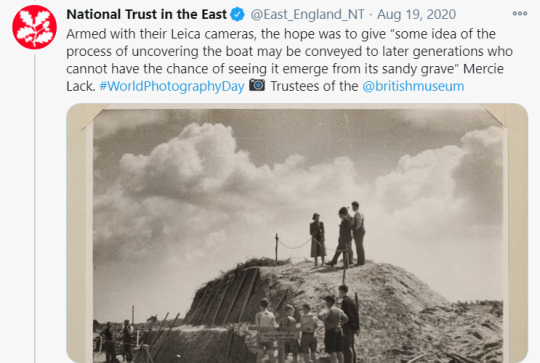
Image credit: National Trust, Twitter
The National Trust has undertaken a project to digitalise this collection and preserve it for posterity.
Unfortunately, as is often the way, in the dramatisation the film follows the book upon which it is based, where the author chose to replace them with a fictional (male) character. Like Edith, Mercie also bequeathed her artefacts from the dig to the British Museum. You’d really liked to have thought that the women’s contributions were recognised and noted and not airbrushed out of the story.
Incredibly, after a treasure trove inquest (August 1939 at Sutton Parish Hall) it was determined that the astounding find - which would entirely revolutionise historians’ understanding of the Anglo-Saxons - belonged not to the Crown but to the landowner and extraordinarily Edith donated the entire haul to the nation.
In 1951, having been stored in Aldwych Tube station during the war, it went on display in the British Museum - albeit with no credit, not a single namecheck, for Basil Brown. Sadly, Edith was no longer around to object. Basil was almost 90 when he died in 1977, but after suffering a blood clot on the brain, she had died in 1942, aged just 59.
Winston Churchill had offered Edith a CBE in recognition of her extraordinary generosity, but she declined the honour, almost certainly on the basis, according to Laura Howarth, archaeology manager for the National Trust, that she had ‘merely been doing her duty’
Laura Howarth says ‘There have been notable Anglo-Saxon finds since, but nothing like this, a fully furnished, undisturbed ship burial. We know of only three Anglo-Saxon ship burials, two at Sutton Hoo and one near by at Snape. So it was a very localised practice’
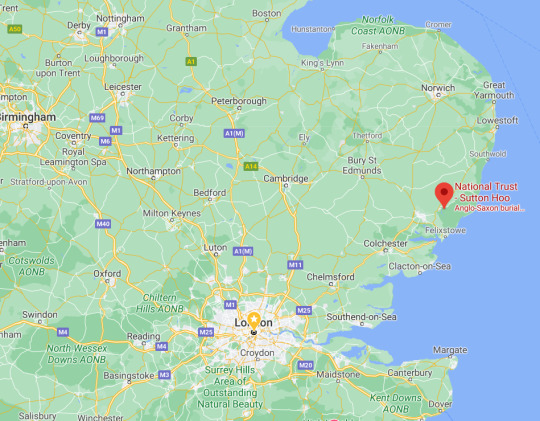
Wikipedia Link Sutton Hoo
TIMELINE:
1926
Edith Pretty buys the site of Sutton Hoo, and becomes fascinated by the strange mounds of earth on her land.
1939
Basil Brown discovers a funerary cache of 263 objects in tumulus 1. World War II breaks out in September.
1946
After being kept safe underground during the war, the treasure—owned by the British Museum—is put on public display.
1990s
Further excavations uncover another intact burial site in tumulus 17 containing a young man, a horse, and weapons.
The British Museum link to Edith and to the treasures

Photo: Harold John Phillips in the public domain. The ‘skeleton’ of the almost 90′ Ghost Ship imprint in the soil. This size ship would have accommodated 40 oarsmen
There’s also a piece about recreating the ‘Ghost Ship’ on this Daily Mail link and it has a good piece of National Trust video showing the site.
Rebuilding the Ship and why use Green Oak?
The Ship’s Company Team is a group of people with the collective desire to resurrect King Raedwald’s burial ship and turn the famous ghost imprint into a living reality.
Although there is no evidence left to examine the identity of the illustrious occupant of the burial ship, a strong guess is that it was possibly King Raedwald? It certainly must’ve been someone fabulously wealthy and highly regarded. The Sutton Hoo sword video from the British Museum at the end of this blog is very well worth a watch, exploring more about the man.
Within the ship, archaeologists found various treasures from across both the British Isles as well as the Byzantine (eastern Roman) and Frankish (western European) empires — including the famed Sutton Hoo helmet.
The grave itself is thought to belong to King Rædwald of East Anglia, a member of the Wuffingas dynasty which has been associated with the Wulfing clan of Sweden, who appeared in the Old English epic poem Beowulf.
If you’d like to read more and see some absolutely fabulous original photographs do go over to this Anonymous Blog. Edith was the cousin of the author’s Great Grandmother and it is a really personal and detailed account of what the family know of this incredible lady. I highly recommend it.
So there we are, you can see how I became utterly absorbed and went from internet site to site following all the history. I’m really interested in catching the film and seeing how the whole story of the people and the discovery is portrayed. Remember the date 29th January, if you have access to Netflix.
*UPDATE:
Please do read this blog about Basil Brown, written by John Cooper
youtube
WHAT ELSE DID I LEARN TODAY:
The Seventh Century covers the years 601-700 and I picked out this fact
Only one woman has ever sat on China's throne as Emperor in her own right. That woman was Wu Zetian (624-705) of the Tang dynasty
0 notes
Photo

The present-day Heathen burial ground of Iceland’s Ásatrúarfélag, or Asatru Fellowship, which acknowledges the Germanic Gods and Goddesses of their ancestors, the Norse settlers of the country. These dieties include Odin, Thor, Frey and Freyja, amongst others.
The picture shows stones in the shape of a Viking ship, with a tree about where the ship´s mast would be and, in the foreground, a grave with the Sunwheel logo of Ásatrúarfélagið. Photo: Haukur Þorgeirsson, 2009.
The Ásatrúarfélag reports that, as of October 2016, it had 3,462 members, up from 3,101 in September 2015, an increase of nearly 12% and now totalling more than 1% of Iceland’s population.
111 notes
·
View notes
Text
The Daily Thistle
The Daily Thistle – News From Scotland
Friday 8th June 2018
"Madainn Mhath” …Fellow Scot, I hope the day brings joy to you…. So much has been discovered, recently, that Archeologists are calling Scotland the Egypt of the north… the only problem is it takes such a time to publish the findings.. the problem is the weather, as if you hadn’t already guessed.. The rain, the snow, the storms all in turn make excavation very difficult, unlike Egypt, where it’s the heat and the odd dust storm… but find things they do, from Guns to Rubbish and it’s all here for you to read about, in the comfort of your own home, with a glass of refreshment close at hand.. unlike the Archeologists that found what you are going to read about…
'HMS BOUNTY' GUN GOES UNDER THE HAMMER IN DUMFRIES…. A naval gun believed to be from HMS Bounty will be sold at auction in Dumfries on Saturday. The Bounty is one of the world's most famous historical ships because of a mutiny in 1798. Fletcher Christian led disaffected crewmen to overthrow the captain William Bligh whose authoritarian command they were unhappy with. They cast Bligh and his loyalists adrift in an open boat and sailed the Bounty to Pitcairn Island. The story of the Bounty and its mutiny is one of the most famous in naval history. Many of the mutineers settled on Pitcairn and on nearby Norfolk Island. The Bounty eventually sank off Pitcairn in what became known as Bounty Bay. When she went down, the ship was armed with four four-pounder guns which were later recovered. Read More: https://www.facebook.com/groups/OurPastBeneathOurFeet/
ARCHAEOLOGISTS UNEARTH AMAZING FINDS ON ABERDEEN BYPASS…. Artefacts and structures found during archaeological excavations on the Aberdeen Western Peripheral Route/Balmedie to Tipperty (AWPR/B-T) project are shedding light on land use and settlement in the north east over the past 15,000 years, including Mesolithic pits, Roman bread ovens, prehistoric roundhouses and a cremation complex. Since the archaeological excavations were completed, specialists have been analysing the artefacts and samples recovered from the various sites and will be detailing the results in a new limited edition book due to be published later this year. Keith Brown, cabinet secretary for economy, jobs and fair work, said: “When complete, the AWPR will help to reduce congestion, cut journey times, improve safety and lower pollution in Aberdeen City Centre, as well as enable local authorities to develop public transport solutions. However, the archaeology has also proven to be yet another huge benefit coming from this project, helping to shine a light on Scotland’s ancient past. “The discoveries along the AWPR route, which would have remained undiscovered had the new bypass not been built, are truly remarkable and underline the importance of the value we place on meeting our environmental obligations as we plan and construct this new infrastructure.” Bruce Mann, archaeologist for Aberdeenshire Council and Aberdeen City Council, said: “There has been a range of fascinating discoveries from the archaeological works carried out on site. Some raise more questions than they answer about what we thought we knew about the north east. For instance, a very unexpected discovery was the presence of Roman activity at Milltimber, likely dating from around 83/84 AD. Ninety bread ovens were uncovered, which were probably constructed by the Roman army at a time of invasion led by the Roman General Agricola. However, no evidence of an associated camp was found, which is unusual for these types of features. We can only speculate as to why the ovens were at this specific location, and what it says about what was happening in the area at the time.” “Going back to the very earliest finds, there was also evidence of stone tool production dating between about 13,000 and 10,000 BC at Milltimber, a near unprecedented body of evidence which pushes back our understanding of human activity in north east Scotland by several thousand years. The same site revealed spreads of flints along with large pits dating between 10,000 BC to 4,100 BC that could have been used by hunter-gatherers to trap deer, elks or aurochs (an ancestor of modern bison). What is particularly exciting is that these finds have been made in an area where our knowledge is rapidly expanding through research projects such as Mesolithic Deeside.”
'TREASURE TROVE' DISCOVERED AT ANCIENT FORT DESTROYED BY VIKINGS…. A ‘treasure trove’ of ancient artifacts has been discovered at a fort in Scotland that archaeologists believe was razed to the ground by Vikings. Archaeologists at the University of Aberdeen made the remarkable finds at Burghead on Scotland’s northern Moray coast. The fort, which was once used by the ancient Pictish people, is described as the largest of its kind in Scotland. The fort was burned to the ground in the 10th century, likely by advancing Vikings. Experts say that this has preserved items that would have otherwise rotted away hundreds of years ago.
Excavations at the site began in 2015. Last month a dig at the site revealed more of the fort’s secrets. “When we started digging, we discovered that while the destruction of the fort in the 10th century may not have been good news for the Picts, the fact that so much of it was set alight is a real bonus for archaeologists,” said Dr. Gordon Noble head of archaeology at the University of Aberdeen, in a statement. In addition to a fortified wall, archaeologists found ornate hair and dress pins, one of which has a detailed bramble design. They also identified so-called “midden layers,” which are essentially ancient garbage dumps and are likely to shed more light on the lives of the ancient fort dwellers.
AMATEUR ARCHAEOLOGIST FINDS ‘PHENOMENAL’ TROVE OF ROCK ENGRAVINGS…. An amateur archaeologist has tracked down hundreds of prehistoric rock engravings in Scotland in what has been described as a “phenomenal” contribution to the understanding of Britain’s earliest artworks. Walking in all weathers once or twice a week, George Currie, 66, a musician by trade, has located more than 670 Neolithic and Bronze Age carvings over the past 15 years. He told the Observer: “It was ridiculous … I got tired of recording the stuff. I’ve never come across quite so much.” There are many more to be found, he believes. Describing the thrill of uncovering ancient artworks that no one has seen for thousands of years, he said: “It’s quite a privilege.” Currie’s discoveries will be included in the biggest research project into British prehistoric rock art, a five-year, £1m study starting next year. The project will be hosted by Historic Environment Scotland (HES) under the leadership of Dr Tertia Barnett, an honorary fellow of the University of Edinburgh. Rock art is “relatively undervalued and little known”, she said. “This project is very exciting.” More than 6,000 prehistoric carved rocks are recorded across Britain, of which some 2,500 are in Scotland. Most have patterns based on cup marks – circular depressions in the surface, often surrounded by concentric rings, with lines or grooves that extend from them – and are thought to date from 4000 to 2000BC. Their original purpose and significance remain a mystery. Among other theories, academics have speculated that they may be territorial markers, fertility symbols, astronomical signs, or simply prehistoric doodles.
A semi-retired musician and teacher of guitar, bass and musical theory, Currie used to play with a band, Darts, that had chart success in the 1970s. He lives in Dundee, where he taught in a local college. “The course stopped. I didn’t fully retire, [but] it did give me more time to pursue this.” Although archaeology was a long-held interest, his devotion to rock art began after he uncovered an unrecorded example two metres from a known site: “I suddenly realised that all these things hadn’t been recorded and hadn’t been discovered … I made a determined effort to find some more.” He travels regularly to Perthshire, which is particularly fertile terrain. He uses a camera, a compass and GPS to pinpoint sites on “wild, empty moorland, with nothing distinguishable for hundreds of metres”.
Bad weather is no deterrent, he said. “In many respects, winter is the best time because the sun is lower in the sky and the light produces more shadows. That makes it easier to see rock art. It’s possible to look at a surface at midday in summer and you won’t see anything. You look at the same surface at 10am on a winter’s morning and, all of a sudden, you’re seeing something that’s entirely different.” Some art is concealed by grass or moss, as with his most recent finds this summer. Most are out in the open, he said.
ORKNEY ARCHAEOLOGISTS EXCITED BY INCENSE POT DISCOVERY…. Archaeologists say they have unearthed the remains of a so-called incense pot at the Ness of Brodgar in Orkney. It is only the fifth one of its type discovered in the British Isles. Other examples have been found near Stonehenge and in Dorset. Site director Nick Card told BBC Radio Orkney that the pieces might not look like much, but were in fact "very exciting". It was discovered by a volunteer working at the dig. The identification was confirmed by Claire Copper, who has recently an MPhil at the University of Bradford, and her supervisor Dr Alex Gibson. Mr Card said the name incense pot was invented by Victorian antiquaries. He added: "It was thought that the design would have been perfect for holding incense, perhaps in ceremonies. But recently analysis of the residues [in the pots] has really been inconclusive. "Other people have suggested that they were perhaps special cups, designed for maybe carrying the embers of fires for cremations." The pots seem to be associated with the disposal of bodies - either burials, or cremations.
On that note I will say that I hope you have enjoyed the news from Scotland today,
Our look at Scotland today is of Edinburgh, as the sun begines to set and the lights of the city start to burn brightly....

A Sincere Thank You for your company and Thank You for your likes and comments I love them and always try to reply, so please keep them coming, it's always good fun, As is my custom, I will go and get myself another mug of "Colombian" Coffee and wish you a safe Friday 8th June 2018 from my home on the southern coast of Spain, where the blue waters of the Alboran Sea washes the coast of Africa and Europe and the smell of the night blooming Jasmine and Honeysuckle fills the air…and a crazy old guy and his dog Bella go out for a walk at 4:00 am…on the streets of Estepona…
All good stuff....But remember it’s a dangerous world we live in
Be safe out there…
Robert McAngus
#robertmcangus
#Scotland
#RLNI
#News
#Blog
0 notes
Photo

Vätteryd
The burial ground of Vätteryd has two stone and 15 ship settings, as well as 183 individual stones from the Iron, Vendel and Viking ages (about 550-900 CE).
Read more at: https://paganplaces.com/places/vatteryd/
3 notes
·
View notes
Photo
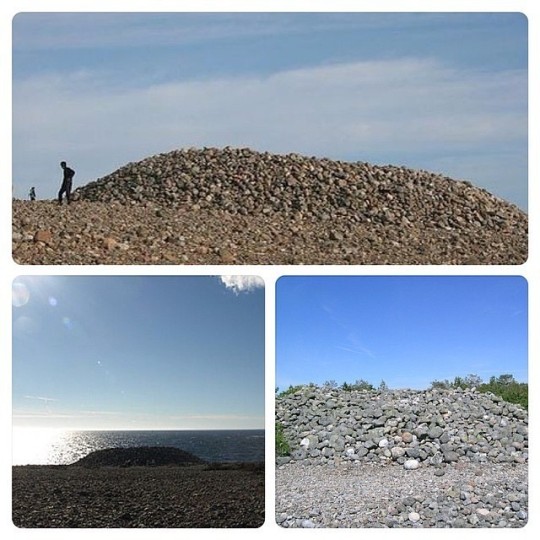
The Old Norse word “mol” means a manmade mound or pile of stones. Such “mols” or cairns as they are more commonly known, were often used by ancient peoples to mark a burial site. Mølen, Norway’s largest stone beach, takes its name from the 230 “mols” or cairns built on it over the ages. The rock piles, which have changed little over the 2000 years they were built, form a sort of ancient cemetery on this beautiful Norwegian beach. The area has 16 large cairns, some exceeding 100 feet in diameter, with almost 200 small cairns in rows parallel to the shoreline. The cairns furthest down towards the sea are from the Late Iron Age and Viking times, while those on higher ground are probably older. Excavations of the man-made rock piles have revealed burnt stones and iron nails, and been dated to approximately 250 A.D. The piles very well may have served as both burial site and crematorium with the bodies of warriors and sailors burned within. Though archeologists do not know what ceremonies were linked to the burials, it is thought that the most powerful members of society were given the most impressive grave sites, while ordinary people had to make do with simpler types of graves. The cairns, which are clearly visible to passing ships, not only served as burial sites but probably as “sea markers” as well helping ships to navigate between trading centers. #destroytheday (Throwback post from 6/17/14)
0 notes